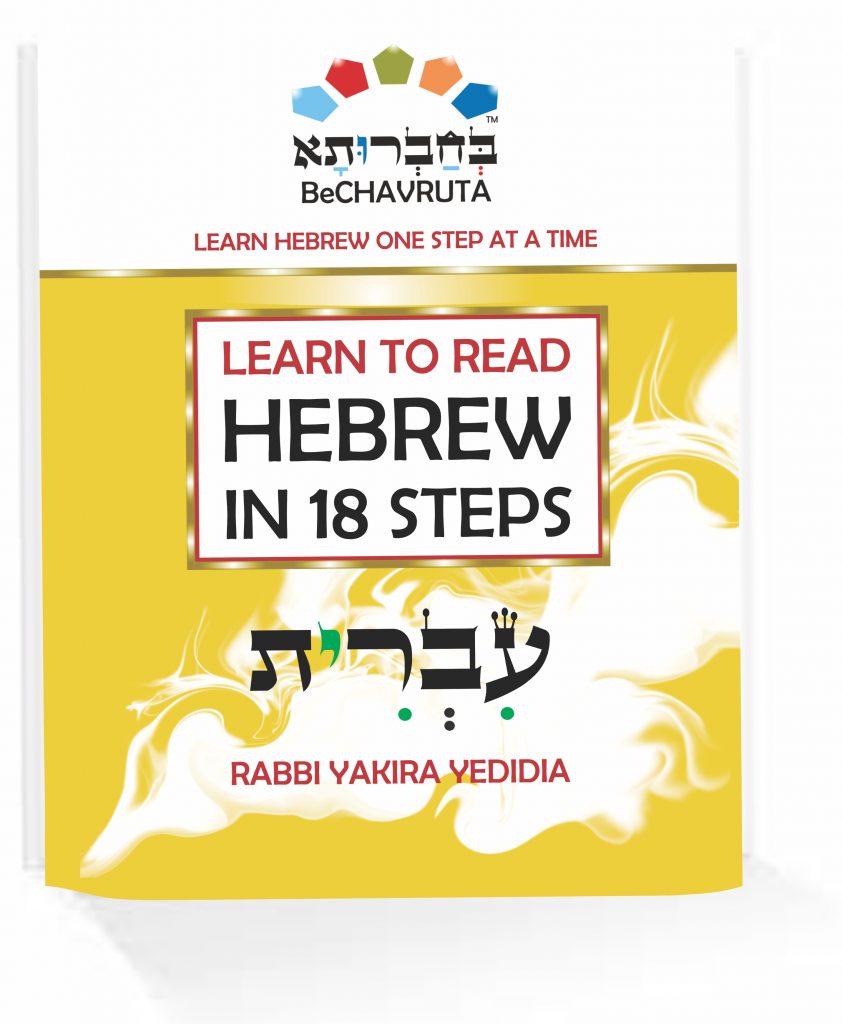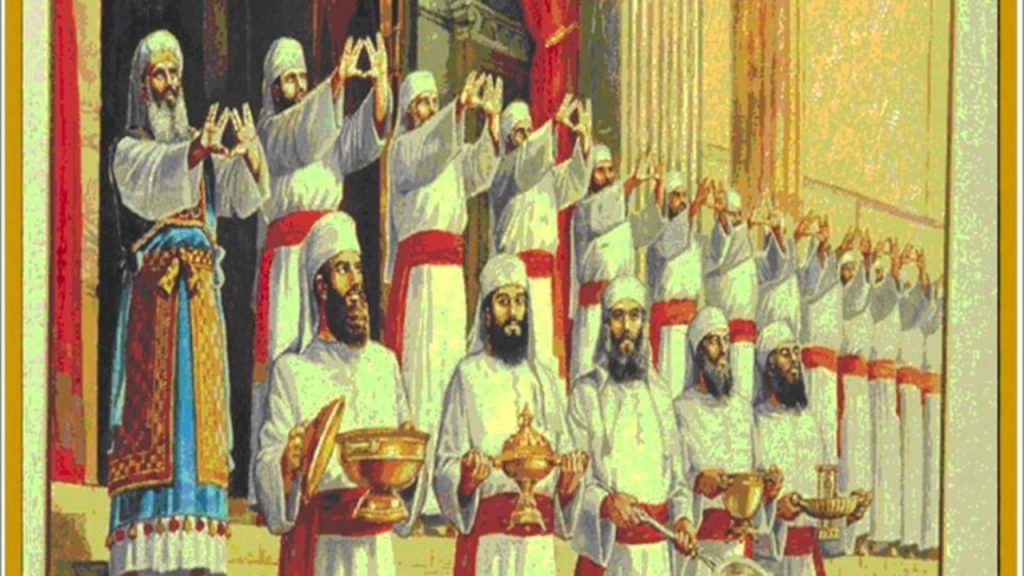In a nutshell
Matot
Parashat Matot (מַּטּוֹת)-Hebrew for “tribes” is read during the 3 week period between the 17th of the Hebrew month Tamuz, and the 9th. of Av – a period which commemorates the destruction of the Beit Hamikdash and the beginning of the galut, yearning for the ultimate redemption. Mosheh conveys the laws governing the voiding of vows, hatarat nedarim, to the heads of the tribes of Israel. War is waged against Midian for their role in plotting the moral destruction of Israel. The tribes of Reuven and Gad (and half of the tribe of Manasseh) separated themselves from the rest of Bnei Israel, asking for the lands east of the Jordan as their portion in the Promised Land, thinking there would not be enough pasture land for their cattle. Mosheh agrees on the condition that they first join, and lead, in Israel’s conquest of the lands west of the Jordan.(Numbers 30:2–32:42)
Masei
Mas’ei (מַסְעֵי)- Hebrew for “journeys,” Mas’ei is the 10th and last in the Book of Numbers. The parashah discusses the 42 stations of the Israelites’ journeys, from the Exodus to their encampment on the plains of Moav across the river from the land of Canaan. The boundaries of the Promised Land are given, and cities of refuge are designated as havens and places of exile for inadvertent murderers, instructions for taking the land of Israel, cities for the Levites and refuge, and the daughters of Zelophehad marry within their own tribe, as a way to keep their land, which they inherit from their father, within the province of Manasseh. (Numbers 33:1–36:1)
Why do we read 2 Torah portions this week?
The lunisolar Hebrew calendar contains up to 55 Saturdays, the exact number varying between 50 in common years and 54 or 55 in leap years. In some leap years (for example, 2014), parashat Masei is read separately. In most years (all coming years until 2035 in the Diaspora, until 2022 in Israel), parashat Masei is combined with the previous parashah, Matot, to help achieve the number of weekly readings needed.
We read parshiot Matot-Masaei in the beginning of the month of Av. Av is the month during which the 1st Beit Hamikdash and 2nd Beit Hamikdash were destroyed. Av has been a month of particular mourning and yearning for the Jewish people, turning to G-d seeking comfort for their ssorrows.
Bli Neder
Even though we cannot see or touch words, words are important, they leave a mark. We should always be careful with our words, especially when we’re about to make a promise, because we are held responsible for keeping it. It is better to avoid making a promise altogether, if and when you break your promise, you’re committing a sin. How can we avoid that ? It is a good idea when we promise something to add the words “Bli neder” (it is not a promise). As a kid, I remember my dad always saying Bli neder, I always thought it’s an easier path for him not to commit to anything. Now I know better, as I’m using Bli neder as much as I can, and as much as needed.
The Torah teaches us a way of undoing a promise. Going to Beit Din (3 Jewish men court), or go to talmid chacham who knows the laws about promises. At what age promises count? up to one year before a child is Bar / Bat Mitzvah. If a kid, ages 11 and 12, promise anything, their promise is not valid. The Torah teaches us about another way where a father can invalid his Kid’s promise, only on the same day he hears it.
42 stations in 42 years
After the sin with the spies, (which occurred in the second year) G-d punished Mosheh’s generation with forty years of wandering in the desert. Bnei Israel rested in 14 places before they sinned with the spies, with a total of 42 stations, in 42 years, recording their path from the Exodus to their encampment on the plains of Moav across the river from the land of Canaan.
In Numbers 33, we are given a list, naming all the stations of the Jewish people as they tracked from Egypt to Canaan during those 42 years.
- Rameses
- Sukkot
- Etam
- Pihahiroth
- Marah
- Elim
- the Red sea
- the wilderness of Sin
- Dophkah
- Alush
- Rephidim
- the wilderness of Sinai
- Kivrot-hataavah
- Chatzerot
- Ritmah
- Rimmon-paretz
- Livnah
- Rissah
- Kehelatah
- mount Shapher
- Haradah
- Makhelet
- Tachat
- Tarach
- Mitkah
- Chashmonah
- Moserot
- B’nei-yaakan
- Chor-hagidgad
- Yotvatah
- Avronah
- Etzyon-gaver
- The wilderness of Zin, which is Kadesh
- Mount Hor
- Tzalmonah
- Punon
- Ovot
- Eyey-haavarim
- Divon-gad
- Almon-divlataimah
- The mountains of Aavarim
- The plains of Moav
Each place was named because of some event that happened there. For example in the place called Dafkah the mann fell down from the sky, being worried about food in the barren desert Bnei Israel heart beat (dafak) anxiously about the lack of food. The name of each place reminds us of the wonder G-d performed there. The Midrash gives another reason: these places deserve honorable mention because they accommodated the Jews during their wanderings.
Arey Miklat
2.5 tribes lived east of the Jordan and 9.5 tribes in Eretz Israel. G-d commanded to set aside 3 arey miklat (cities of refuge) on the east side of the Jordan and 3 in Eretz Israel. Arey miklat sheltered murderers only if they had killed by accident. According to our sages there were more than 6 arey miklat if we add the other 42 cities of the leviyim . The Leviyim served in Beit Hamikdash and were the Torah teachers of the people. They had no time to farm, therefore they were not given a portion in Eretz Israel, instead they got 48 cities, which also served as arey miklat.
Upon completion of each of the five books of the Torah in the course of the Shabbat morning Torah reading, it is customary for everyone present to shout out loud: “chazak, chazak, v’nitchazek” which means “Let us be strong, let us be strong and let us strengthen others as well.” Upon completion of Sefer Bamidbar (Numbers) may we all go from strength to strength!

ORDER RABBI YAKIRA NEW BOOK “LEARN TO READ HEBREW IN 18 STEPS”
8 Mitzvot in parashot Matot-Masei
Matot Mitzvah Count: 2 1. Not to break oaths or vows Num. 30:3 2. For oaths and vows annulled, there are the laws of annulling vows explicit in the Torah Num. 30:3 Masei Mitzvah Count: 6 1. To give the Levites cities to inhabit and their surrounding fields Num. 35:2 2. Not to kill the murderer before he stands trial Num. 35:12 3. Not to pity the pursuer Num. 35:12 4. The court must send the accidental murderer to a city of refuge Num. 35:25 5. Not to accept monetary restitution to atone for the murderer Num. 35:31 6. Not to accept monetary restitution instead of being sent to a city of refuge Num. 35:32 | ||
The 613 Mitzvot
The commandment of the tzitzit. The word tzitzit is related to the root word lehatzitz- to look, therefore a tzitzit is an object at which we look . In addition, the word tzitzit numerical value is 600. The tzitzit has 8 threads and 5 double knots in each corner (8+5=13), thus a tzitzit represents the 613 mitzvot in the Torah.
In The Torah there are 613 commandments, mitzvot, also known as the Law of Moses (תרי״ג מצוות, taryag mitzvot). The 613 mitzvot are first recorded in the 3rd century CE, when Rabbi Simlai mentioned it in a sermon that is recorded in Talmud Makkot 23b.
The 613 commandments include 248 “positive commandments”, to perform an act (mitzvot aseh), and 365 “negative commandments”, to abstain from certain acts (mitzvot lo taaseh). The negative commandments number 365, which coincides with the number of days in the solar year, and the positive commandments number 248, a number ascribed to the number of bones and main organs in the human body.
Though the number 613 is mentioned in the Talmud, its real significance increased in later medieval rabbinic literature, including many works listing or arranged by the mitzvot. The most famous of these was an enumeration of the 613 commandments by Maimonides, The Rambam.
Many of the mitzvot cannot be observed now, following the destruction of the Second Temple, although they still retain religious significance. According to one standard reckoning, there are 77 positive and 194 negative commandments that can be observed today, of which there are 26 commands that apply only within the Land of Israel. Furthermore, there are some time-related commandments from which women are exempt (examples include shofar, sukkah, lulav, tzitzit and tefillin). Some depend on the special status of a person in Judaism (such as kohanim), while others apply only to men or only to women. According to Rambam Organized by Parshah. based on Wikipedia and http://www.vaadrv.org/rambam613mitzvot.asp ONE BIG IMPORTANT NOTE WHEN USING THIS LISTING: This listing is not all inclusive. Rambam may site multiple sources for a mitzvah is his works but this list currently only gives one source for each mitzvah.
WOULD YOU LIKE TO READ HEBREW?
THE BEST TIME TO PLANT A TREE WAS 20 YEARS AGO. THE SECOND BEST TIME IS NOW!
Take your first step, and in as little as 9 hours of BeCHAVRUTA Crash Course Book, you will be able to Read Hebrew Fluently & Accurately like a Pro!

ORDER RABBI YAKIRA NEW BOOK “LEARN TO READ HEBREW IN 18 STEPS”
“Original, fun, and effective, this is a superb way to learn to read Hebrew.“- DENNIS PRAGER
“A clear, lucid and immensely helpful guide to learning Hebrew. Takes the reader by the hand and introduces the holy tongue in living color.“-RABBI DAVID WOLPE
“An instant classic! Rabbi Yakira has written a primer on Hebrew that is both enchanting & colorful. It is sure to capture the interest of students & magically introduce them to the Hebrew language!”-RABBI DR DAVID ELLENSON
The Priestly Blessing
Check out YedidYah “The Priestly Blessing” Birkat Hakohanim. Music by Rabbi Yakira Yedidia https://youtu.be/YNE11QdEMN0
יְבָרֶכְךָ יהוה, וְיִשְׁמְרֶךָ- May the LORD bless you and guard you
יָאֵר יהוה פָּנָיו אֵלֶיךָ, וִיחֻנֶּךָּ -May the LORD make His face shed light upon you and be gracious unto you
יִשָּׂא יהוה פָּנָיו אֵלֶיךָ, וְיָשֵׂם לְךָ שָׁלוֹם- May the LORD lift up His face unto you and give you peace
Yevarechecha Adonai, V’Yishmerecha
Ya’er Adonai Panav Eleycha, ViChoneka
Yisa Adonai Panav Eleycha, V’Yasem Lecha Shalom
(Number 6:24-26).
Check out YedidYah “The Priestly Blessing” Birkat Hakohanim. Music by Rabbi Yakira Yedidia https://youtu.be/YNE11QdEMN0
Check out YedidYah Psalm 96 “Yiram Hayam” Music by Rabbi Yakira Yedidia https://youtu.be/aTBD4i9nvXw

This blog article was inspired by chabbad.org, Sefaria.org, Wikipedia.org,

